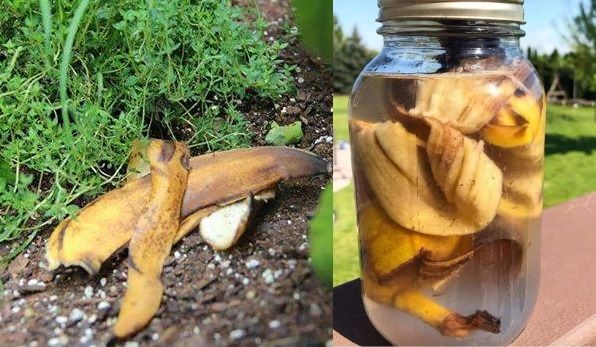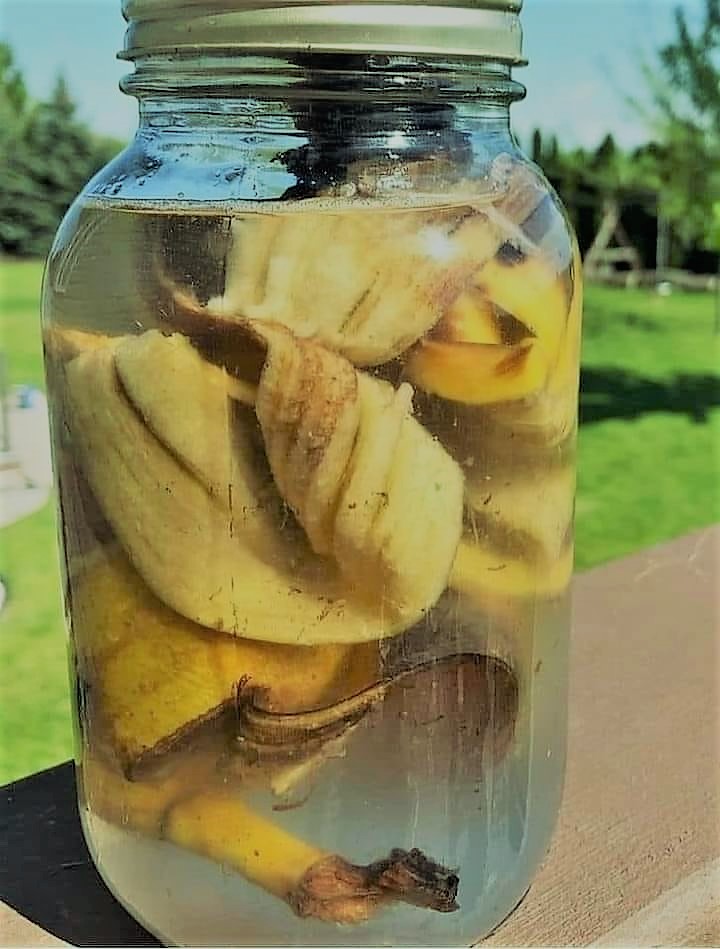Banana peel fertilizer is excellent for tomatoes, especially if you’re looking to grow them indoors. Bananas contain a lot of potassium, which is essential for helping plants grow and thrive. Banana peel fertilizer works by stimulating the roots of the plant so that they can grow more quickly and reach deeper into the ground. This helps your tomato plant produce more fruit and larger fruit, which will result in a higher yield.
Aside from being a source of nutrients for tomatoes, banana peels are also a great way to get rid of unwanted pests in your garden, such as slugs and snails. These pests and other disease-causing pathogens will leave your tomatoes once you’ve started using this banana peel fertilizer on your tomatoes. There is so much that your tomato plant will benefit from banana peel fertilizer; this article will explain how to prepare the fertilizer and how to apply it to tomato plants for the best results.
Effectiveness Of Banana Peel As Fertilizer

Banana peel fertilizer is very effective for growing tomatoes and other plants. It has many benefits, including the fact that it can be used in place of chemical fertilizers. Banana peel is full of nutrients that are essential to the growth of plants, and it can be used to fertilize vegetables like tomatoes, cucumbers, watermelons, and other fruits, as well as trees and shrubs. Also, because banana peels decompose quickly, they make great organic composting material to put around your plants.
Banana peels are rich in potassium, phosphorus, and calcium; there are many valuable vitamins and minerals in banana peels that can encourage the healthy growth of the tomato plant and boost soil fertility. It may interest to know that banana peels are an organic fertilizer; it is cheap and readily available for use. If you are trying to grow your tomatoes in all-natural or organic conditions, using banana peels alongside the traditional fertilizer is an excellent choice.
Banana peels lack nitrogen; although Nitrogen is very important for tomato growth, too much nitrogen can cause them to grow too much green foliage and not enough fruit. Banana peel is a rich source of potassium, as it contains 42% potassium, which is higher in potassium than even wood ash. Banana peels contain other nutrients aside from Potassium. The most notable is calcium, which helps prevent blossom end rot in tomatoes; manganese, which aids photosynthesis; and sodium, which helps water flow between cells. They also have traces of magnesium and sulfur, elements that help make chlorophyll for the plant’s growth. This makes Banana peels an ideal fertilizer for tomato plants.
How To Make Banana Peel Fertilizer For Tomatoes
The collection of banana peels comes first in the process of making banana peel fertilizer. The mechanism of action in this process is the decomposition of the banana peels. Decomposition brings about the release of the nutrients present in the banana peels, and it can last longer in the soil compared to the commercial NPK fertilizers.
Next is chopping the banana peels into smaller pieces to make the decomposition process faster and better in nutrient mineral delivery. Aside from this, chopping the peels will also help in handling the fertilizer better. Although not compulsory, it is recommended that you cut the banana peels into small bits before usage. The banana peels can be used solely or mixed with other materials with nutritional properties like sawdust, manure, or compost before applying them to your garden.
Banana peel fertilizer can be applied to tomatoes in different ways, such as;
- As liquid fertilizers
- As mulch
- As compost
- As Top dressing and Band placement
Learn how to make and effectively apply banana peel fertilizer on tomatoes to improve growth and high yield of fruits.
1) Banana Peel Liquid Fertilizer
Banana peel liquid fertilizer is a great alternative to powdered or solid fertilizers. You can use banana peels to make a nutrient-rich liquid fertilizer, which is ideal for use in your garden or in your home.

To make banana peel liquid fertilizer, follow these steps:
- Cut the ends of the banana peels (leaving just enough to hold them in your palm).
- Wash the peels well with warm water to remove any dirt or bugs.
- Put the washed peels in a jar or container and cover them with water.
- Let this steep for at least one week before using it as fertilizer. You can also let it steep for up to two weeks if you want a stronger flavor profile.
- Remove the peels from the jar after they’ve steeped and you have collected the liquid.
- You can place the leftover peels on your compost heap or in your garden soil, where they will decay naturally so that they can be used as fertilizer for your plants.
Once you have collected the banana peel liquid fertilizer, you can apply it directly to the tomato leaves using a garden sprayer as foliar feed. Alternatively, you can apply directly to the root zone of the tomato plants using irrigation drip lines. The liquid fertilizer goes directly to the roots and helps the tomatoes immediately. The used peels can be recycled into other forms of fertilizer for the garden, such as compost or buried to fortify the soil.
2) Banana Peels as Mulch
Banana peels can also be used as mulch in tomato gardens; aside from helping to retain soil moisture and regulate soil temperature, banana peels can increase soil fertility and make more nutrients available for the tomato plants. The mulch layer can be made of banana peels only or alongside other materials like bark, soil, or compost. The banana peels are mixed with other materials (e.g., coconut husk) to create a layer about 10 cm deep around the tomato plant to keep the soil environment favorable.
3) Banana Peels Compost Fertilizer
Banana peels can also be used as compost to grow healthy plants such as tomatoes. Banana peels can be composted manually or using a compost bin. The compost is made up of decomposed organic matter, such as banana peels, leaves, grass clippings, and other organic materials. The compost bin should be kept moist until the materials in it decompose completely (about 6 weeks). Then they can be used as a fertilizer for tomato plants.
Compost made with banana peels is a balanced organic fertilizer with a good amount of nitrogen, phosphorus, and potassium for your tomato plant growth. The high content of organic matter helps tomato plants develop their roots more efficiently than any other compost material available in the market today. The organic matter improves the water retention ability of soil and promotes better growth of tomato plants by improving the soil quality. The compost can be applied as top-dressing near the root zone of the tomato plant.
4) Band Placement:

Banana peel fertilizer can be applied through band placement to support the flowering and fruiting of tomato plants. Banding is done by applying the chopped banana peels directly near the root zone of the tomato plants. As the banana peel decomposes, it slowly releases nutrients into the soil for the use of the tomato plant. The result is seen in the rapid growth and development of the tomato flowers. You would also observe bigger tomato fruits with no defects as fruiting commences.
5) Localized Placement
Localized placement is another method of using banana peel fertilizer. It refers to the placement of banana peels over small areas in the tomato garden rather than covering the entire garden. The banana peels can be placed in a dug pit or channel about 3 feet deep between the rows or columns in the tomato garden. This way, the banana peels provide nutrients for all the tomato plants. This method helps in increasing the productivity and yields of the tomato plants by ensuring that each plant receives adequate fertilizer along with sunlight, and water.
How Often To Use Banana Peel Fertilizer
Apply banana peel fertilizer during land preparation before transplanting the tomato seedlings, this will aid prior decomposition and earlier release of nutrients. You can apply the banana peel liquid fertilizer 3 times per week during the flowering and fruiting stages of tomatoes. The tomato plants need more potassium during this period, the banana peel fertilizer can be a good option.

As soon as the tomato starts to fruit, you can apply the compost made with banana peels and other organic materials to aid bigger fruit production and give the tomato plant the strength to bear the fruits and height. The banana peel fertilizer can be applied through the band placement and localized placement described above.
Benefits of Banana Peel Fertilizer
- As a source of potassium, banana peel fertilizer supports the fruiting and flowering and fruiting of tomato plants.
- The potassium in banana peel fertilizer helps the tomato plants move nutrients and water between cells.
- This fertilizer helps tomato plants maintain their structure by acting as an energy source for cellular respiration.
- Banana peel fertilizer helps to strengthen tomato stems and fight off disease through an adequate supply of potassium.
- The fertilizer helps tomato plants grow more vigorously during drought conditions.
- Banana peel fertilizer supplies enough potassium to make tomato flowers more vibrant, as well as improving the taste of tomato fruits.
- Banana peels can be used as a mulch on your garden, or they can be added to the compost pile along with other types of organic material like leaves, grass clippings, or wood chips.
- You can also use banana peels as an agricultural fertilizer by scattering them around your plants or adding them to the soil in your garden beds before planting seeds or seedlings.
- The banana peel fertilizer can also help tomatoes resist attacks from pests and diseases that might otherwise attack them.
Read More:
- Effects Of Eggshells On Tomato Plant Growth And Garden Soil
- Ten (10) Disadvantages of Banana Peel Liquid Fertilizer
Conclusion
There is no doubt that banana peel fertilizer is an excellent choice for tomato plants. It’s a simple, safe way to feed your tomatoes and get them to grow well. It’s also easy to use and requires little effort on your part. Try it and share your testimonies!
Share!!!